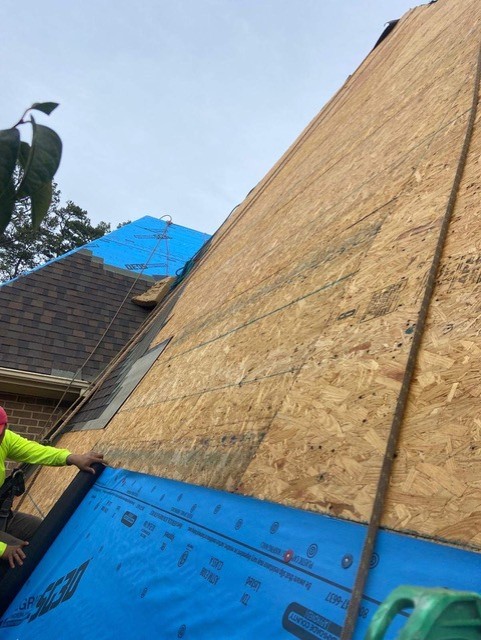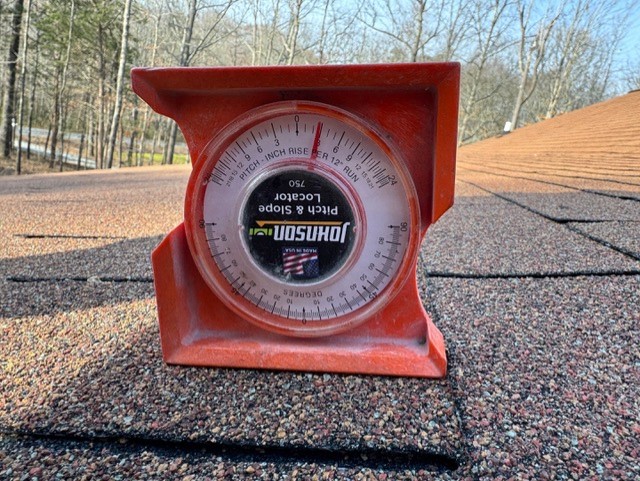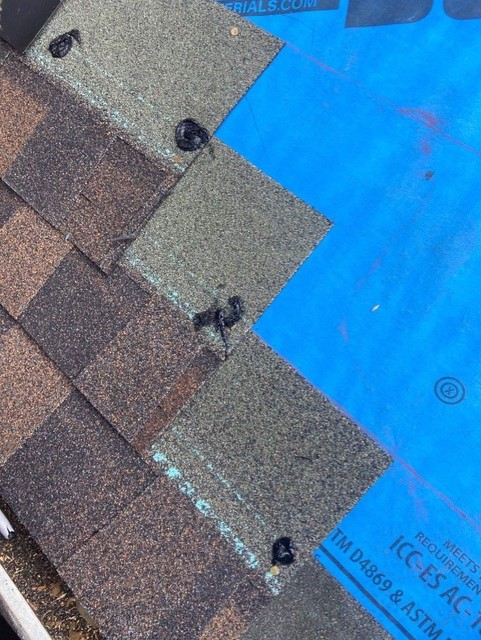Does the Roof Pitch Impact What Materials are Used and How They’re Installed?
Understand Roof Basics: Pitches
Roof pitch, also known as slope, refers to the steepness of your roof. It’s typically expressed as a ratio, Rise: Run in inches. For example, a roof pitch of 4:12 means that your roof rises 4” for every 12” of run. The roof pitch influences how quickly it can shed water and its exposure to weather elements.

Tailoring Installation to Roof Pitches
Lower Slope Residential Roofing (2:12 to 4:12):
Lower slope roofs require special attention due to the slower rate they shed water. To address the torrential rains typical of Charlotte’s rainy season, specialized underlayment materials such as ice and water shield or double felt paper may be installed. These materials provide an extra layer of waterproofing protection to safeguarding against water infiltration.
Moderate to Steep Slope Residential Roofing (4:12 to 12:12):
In moderate to steep slope roofs, standard underlayment materials like felt paper or synthetic felt paper, and strategically placed ice and water shield can be used. Proper installation techniques, including correct nailing patterns and sufficient overlaps, ensure effective water shedding while providing adequate ventilation to prevent moisture buildup.
Very Steep Slope Shingle Installation (greater than 12:12):
Very steep roofs present unique challenges, requiring meticulous attention to detail during installation. Shingles must be hand-sealed to enhance adhesion and prevent wind uplift. Additionally, a 6-nail pattern is often employed to secure shingles firmly in place, minimizing the risk of blow-offs during high winds.
Special Underlayment Requirements for Lower Slopes
Ice and Water Shield:
These membranes offer superior waterproofing properties and are self-sealing, providing an additional layer of protection against water penetration.
Double Tar Paper Underlayment:
Tar paper is made from glass or cellulous fibers, or polyester fleece that are compressed into thin sheets. These sheets are treated with asphalt or tar to make a waterproof composition. Installed in a staggered double layer makes it ideal for lower slope applications where water runoff may be slower.

Nailing and Hand Sealing Techniques for Very Steep Slopes
To ensure shingles stay put in high winds, a 6-nail pattern is utilized, with additional nails strategically placed along the shingle’s edges and corners.
Hand Sealing:
Hand-sealing involves applying roofing cement or adhesive to the underside of shingles, enhancing their bond and preventing wind-driven rain from infiltrating beneath them.
Precision for Every Pitch
No matter your roof pitch is, proper roof installation techniques are more important than any other factor for long-term roof performance. Tailoring installation methods to the specific requirements of different roof pitches ensures roof system durability against the elements for years to come.

At Blue Fox Roofing & Renovations, we understand the more intricate aspects of our trade. We train our entire team to recognize problem areas, strategize against the risk, and install roof systems the right way. Contact us to learn more about how we can safeguard your home with expert roofing solutions, regardless of your roof’s pitch.



